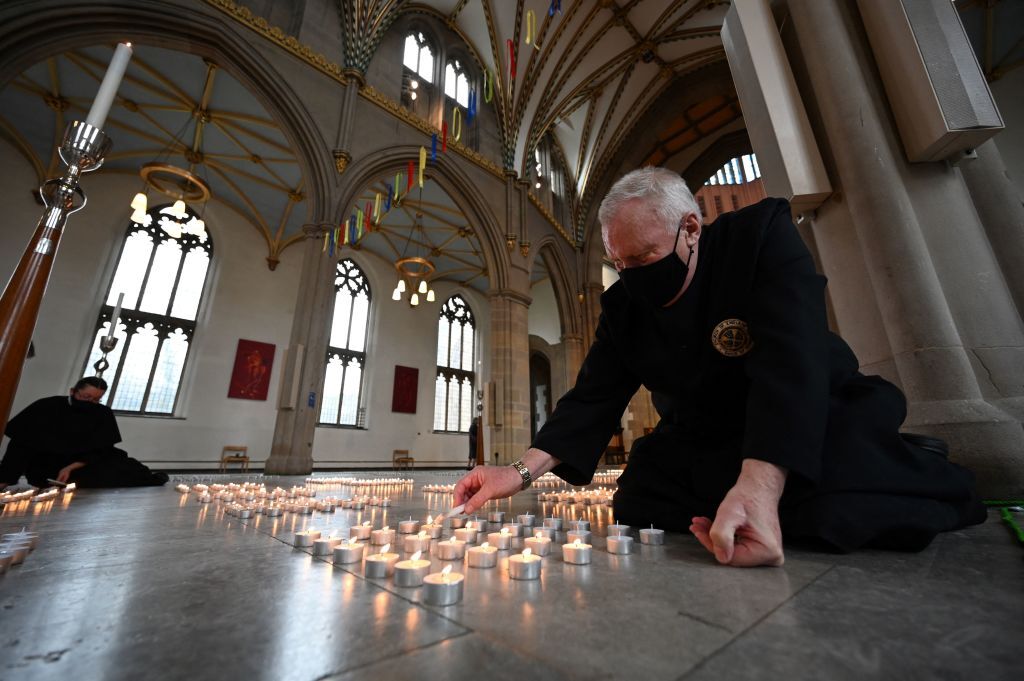Alongside the daily figures of death and infection, which thankfully are improving, we’ve recently been assaulted with the “news” – shock, horror – that in an NHS overwhelmed with Covid, the waiting lists for surgery have grown exponentially.
If it’s any comfort, the many thousands of surgeons employed by the NHS are as frustrated by the present situation as the patients waiting on their lists. Why should that be – surely they’re sitting idly, twiddling their thumbs, and still pulling a regular salary without a care in the world? Well, no, they’re not.
To demonstrate, rather than pore over national statistics, let’s shrink the sprawling but finite health service down to the microcosm of your local district general hospital: around 600 beds and serving a population of say, 400,000.
Under normal circumstances it performs well and copes with seasonal fluctuations in workload. Functionally, there are two entrances: one signposted “Emergencies”, and the other “Elective Surgery” (that is, waiting list patients). There are two exits, signposted “Home” and “Mortuary”.
By popular public demand, the “Emergencies” door is always open for anything and everything, including patients with Covid, heart attacks, strokes, pneumonia and other problems needing physicianly care. The surgical emergencies include trauma, appendicitis, peritonitis, broken bones, leaking aneurysms and many other conditions, most of which demand immediate or urgent surgery and make up at least half the surgical unit’s workload.
For “routine” patients needing life-enhancing operations such as a joint replacement or a hernia fixed, the immediate prospects look bleak.
But a surgeon can’t work in isolation. He or she needs a fully-staffed operating theatre, a post-op recovery suite, often an ICU bed for extremely sick patients, and ward space with available beds.
The physicians are now inundated with Covid patients needing ventilation. The 12-bed ICU has rapidly doubled or tripled in size, expanding into areas with suitable technology, infrastructure, and staff capable of caring for ventilated patients; namely, the eight main operating theatres and post-op recovery suite.
On the wards, surgical beds are being co-opted for seriously ill Covid patients who don’t (yet?) need an ICU place. The surgeons are forced to retreat into the Day Surgery Unit, which by its very nature, is isolated from the main hospital and unsuitable for any other purpose. Despite being designed for “day patients” only, with two small theatres, a tiny recovery suite, twenty beds and inadequate bathroom facilities, it becomes a 24/7 sanctuary where they can at least do the emergencies.
Meanwhile, the Elective Surgery entrance is firmly padlocked, and patients continue to wait. Waiting lists are not orderly queues working on a first come first served basis. Rather, they are clinical priority lists, stratified into “routine”, “soon”, and “urgent”, with “urgent” being cancers or other life-threatening conditions.
In the past year most surgeons will have had sleepless nights worrying over their urgent cases, and moved mountains by negotiating, cajoling, arguing, begging, borrowing or stealing theatre time and bed space to treat them. To some extent “urgent” and “soon” cases have been managed by the hospital contracting theatre time and beds in the nearest private facility. Sadly, for “routine” patients needing life-enhancing operations such as a joint replacement or a hernia fixed, the immediate prospects look bleak.
The great unknown is the backlog of patients who have so far shunned surgical clinic appointments for fear of catching Covid.
Throughout the crisis, the hospital’s out-patient department has been running normally. Surgeons continue to do clinics, treat old and new patients, and put some on waiting lists, usually with no hope of seeing them again anytime soon. It must be soul-destroying. And for the foreseeable future, the national waiting list figures will continue to grow.
If and when the pandemic is over, the NHS will have an enormous waiting list problem. Trained surgeons and anaesthetists cannot be conjured from thin air, nor can appropriate staff and infrastructure. So those same surgeons presently shackled by circumstance in your local hospital will be expected to deal with it. And I suspect it may take many years to catch up.
However, there is some good news. Nationwide, surgeons routinely do five million waiting list operations a year, though the shock-horror headlines conveniently ignore this fact. For the past few years the total waiting list has hovered around a controllable 4.4million.
But as of last December, 200,000 patients had waited more than a year for their operation, whereas the usual figure is around 1500. That’s a 4% shortfall on usual activity, and given the situation, an outstandingly good performance. Another 4% shortfall this year though? The maths is depressing.
And the great unknown is the backlog of patients who have so far shunned surgical clinic appointments for fear of catching Covid. It could be millions, but the “urgent” ones will always be treated first.
Kevin Lafferty is a former surgeon and author of Cutting It: Real-Life Tales of General and Vascular Surgery


